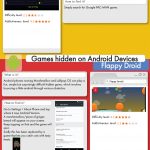How to Successfully Use the Job Application System
Job Application Systems have become the go-to method for streamlining the recruitment process. For candidates hoping to land a great job, these systems can pose a bit of a challenge, since you cannot use the same approach you would when dealing with a human. But, at the same time, knowing how to use these programs to your advantage can give you an edge over your competition.
These programs are also advantageous for candidates because they promote equal opportunities for all. They only scan relevant information in a candidate’s application. Thus, they are not liable to be prejudiced, or make biased choices.
Job Application Systems, Recruitment software, or Applicant Tracking Systems (ATS) are programs designed to speed up the process of sorting out CVs and cover letters. For companies, this means they don’t have to waste hours upon hours, going through all sorts of similar looking CVs to find the right candidates. They provide companies with a centralized database, in which all the data collected either directly, through to ATS’s front-end, or from job application platforms.
ATSs work by searching for keywords in your resume or cover letter. More recent versions use AI and natural language processing tools, meaning they are now capable of semantic interpretation. But most still look for generic keywords or phrases.
Thus, in order to successfully use these programs to your advantage, the first step is to identify these keywords or phrases. You can do this by looking up the terms that are more frequently used in connection with the job you are looking for. There are certain platforms that offer detailed descriptions of specific jobs, based on the industry they relate to.
The other way in which you can spot keywords is by looking at the job ad itself. Find out if there’s anything in particular they focus on, and make sure you identify the exact terms they’re using. There may be more than one term for a particular job, or skillset. Make sure you identify the one your recruiter prefers using.
The next step is to see how you can adapt your resume to include as many of those keywords as you can. Make sure your CV remains coherent, though. If your resume gets highlighted by the ATS, it will eventually reach an actual HR rep, and they’ll be able to spot whether or not you’ve been trying to hack the system. So don’t think that just because you got chosen by the system, you’re done. Once you’ve gotten past the ATS, you’ll still have to impress your employer, even if your CV stood out. And your resume is only half of the equation. Many fields require you to hand in a portfolio as well. A well-designed portfolio can do wonders for your job prospects. These won’t be handled by the ATS.
Once you’ve found your key phrases, and you’ve added to your CV, the next thing you’ll want to consider is the layout. Most job application systems are not very good at handling overly complicated layouts, with intricate designs. So, it’s best if you just stick to a nice, clean look. That way, you can make sure the system immediately spots what it’s looking for.
For the same reason, it’s good to choose a simple font as well. Web-friendly fonts, such as Arial or Calibri seem to work best. Complicated fonts may be too hard to interpret, and the program might not be able to read your CV. In fact, it seems most recruiters prefer to see these fonts as well, so it’s a good idea to use them in your resume, even if you’re not sending it through an ATS.
Some job application systems are known to have issues when it comes to information contained in the header or the footer of the page. It’s best if you avoid putting in any important information in these spaces, just in case.
Certain platforms will provide you with a form that you can fill in, instead of sending your CV. In this case, you won’t have to bother with the font, and layout. But you do have to be careful to fill in every entry they require. The job application system could filter out your application just because you didn’t put in all the right information.
Using job application systems has its advantages, both for recruiters and candidates. For employers, this means they now have more time to spend on assessing whether a candidate is a right fit for their company, once the resume part is out of the way. For potential employees, they now have an opportunity to be assessed based on their own objective merits and skills.
Image Source: 1
Author bio:
Amanda Wilks is a Boston University graduate and a part-time writer. She has a great interest in everything related to job-seeking, career-building, and entrepreneurship and loves helping people reach their true potential.

















One Response to How to Successfully Use the Job Application System